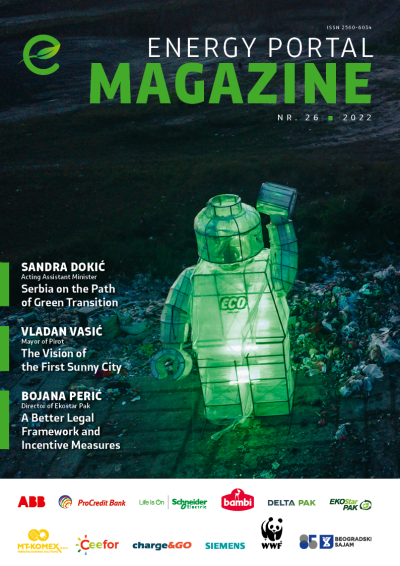
Dear readers,
Imagine that one cloudy afternoon around five, you unlock the door of your apartment, a cold and dark space is in front of you, and you press the buttons in a well-learned rhythm: click, click, click… Light in the hall, water heater, thermostat, light in the room, televisi- on… Respectively, without unnecessary movements, like a robot.
Forget about this scenario and imagine that, before you step into your smart home, everything is already switched on, and the afternoon can easily start in the pleasant and warm environment of your home.
If you like the idea of your home working for you and doing most of the routine thin- gs, pay attention to our articles on smart buildings, whether they are apartments (text The new housing culture comes into vogue) or completely modern buildings that are fully electric and digital (text Digitization is a key to sustainable, resilient, and hyper-ef- ficient buildings). Regarding smart infrastructure, we provided a good insight into this concept in the text “Siemens – We create environments that care”, where you will find a good example of this concept in the form of a realized project to modernize the medium voltage network in Serbia.
However, these objects are not the only smart ones. The topic of this issue on waste management gave us reason to believe that we have the brains to solve the accumula- ted problems in this area. In two conversations with Sandra Dokić, Assistant Minister for Environmental Protection and Stefan Simeunović, Director at Serbian Environmen- tal Protection Agency, we learned that the Ministry of Environmental Protection had shown its determination to clean up the so-called historical waste completely (hazardo- us and non-hazardous) in Serbia created in the period after 2000 in bankrupt factories or factories in the process of privatization, as well as that the Ministry provided funds for the removal of 700 illegal landfills and the installation of video surveillance to preserve once cleaned locations.
The companies Bambi, ProCredit Bank, Delta Pak, and Ekostar Pak (operators of pac- kaging waste management systems) also manage waste wisely, so we chose them as examples of good practice. And on the following pages, you can read what they are doing to reduce waste generation and save resources.
If you work in the civil sector, we suggest you read the grant application require- ments because WWF is looking for creative project ideas for which it has earmarked 18,000 euros per project. Perhaps you are interested in the construction of a solar power plant and the possibility of producing electricity that you would deliver to the grid. Still, you are worried about the inadequate way of calculating VAT, excise taxes and other fees, so read our text “How to become a prosumer?”
To take a break with inspiring topics, “meet” people who resisted challenges and devised a solution for ragweed allergy (Innovative solution for a weed-free life) or new material, bacterial cellulose, which is actually a residue of the tea fermentation process (SKOBI – Inspiration in a cup of kombucha).
If you ignore our suggestions and start reading at the beginning and move toward the end, you won’t waste time. I am sure you will learn something new and useful from each text.



